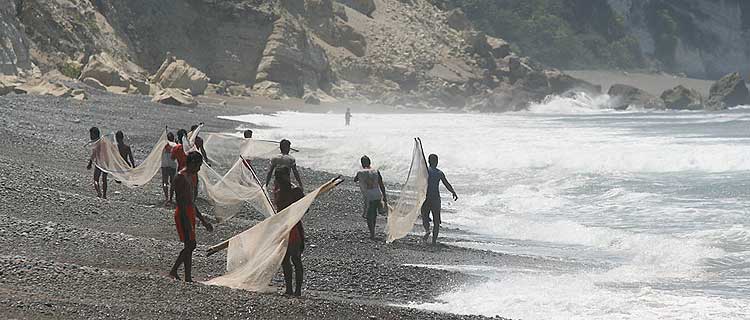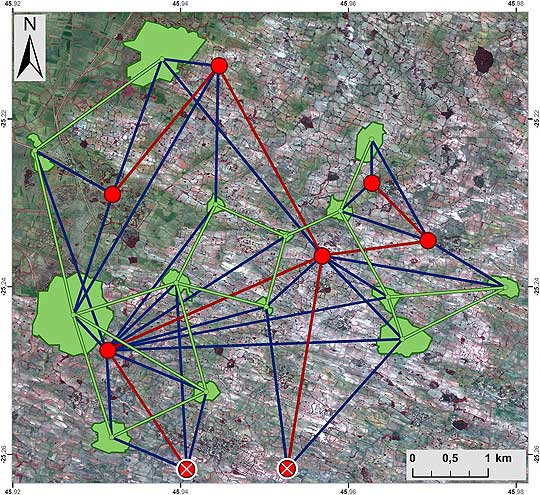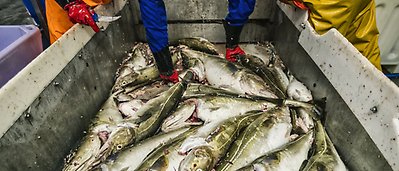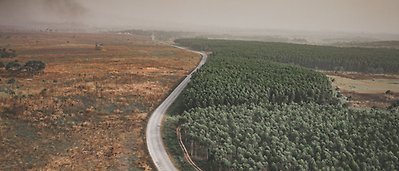
Cracking the social-ecological code
New model disentangles interdependencies between social and ecological systems
The overarching insight that societies and nature are interacting to the extent of being interdependent forms the core of all research at Stockholm Resilience Centre.
However, quantitatively oriented analyses of the complex interactions between social actors and ecological resources are still rare. This is largely due to the complex nature of the social-ecological interactions and the limited interactions between natural and social sciences. A new model might help narrowing the gap between the two disciplines.
Unpack and define
In a new article published in Global Environmental Change, centre researcher Örjan Bodin and Maria Tengö from Department of Systems Ecology at Stockholm University present a framework that makes it possible to unpack and define more in detail the many ways in which societies and nature are interdependent.
Request article
"We propose a framework that builds on the assumption that a social-ecological system (SES) can be modelled as a social-ecological network," Örjan Bodin says.
The analysis is based on a minimum of two social actors and two ecological resources. These sets of nodes connect in at least 28 different ways. In the model, a social actor may be an individual, a community, an organisation or a state. An ecological resource may be a herd of grazers, a species or a fishing site.
"A real social-ecological system is typically much larger and more complex. However, by extracting all possible combinations of two social and two ecological nodes, we can disentangle some of the inherent complexities between them. Furthermore, the framework allows us to integrate different theories from the social- and the natural sciences", Bodin explains.
Methodology
The social-ecological network model is based on a three-step approach. The first step is to define the social-ecological interdependencies for a particular study. This could for example be direct resource extraction such as fishery.
The second step is to define the social actors and ecological resources that form the basis for the social-ecological system (e.g. fishermen and fish species).The third step is to define social-to-social and ecological-to-ecological links. In a fishery context, this could for example be exchange of fishing gear among fishermen, and trophic interactions among the targeted fish species.
To illustrate and assess the applicability of their model, Bodin and Tengö used it to study a small-scale forest governance in an agricultural landscape in southern Madagascar.
The landscape included a village of approximately 9 000 inhabitants and the social actors were identified as the six land-holding clans in the village alongside two other clans residing elsewhere. The social-to-ecological and social-to-social links were assessed for each specific forest patch and clan. This was done through semi-structured interviews with clan authorities and forest managers. The ecological-to-ecological links were identified and assessed based on the potential for seed dispersal among the forest patches. This dispersal is essential for the scattered patches to sustain plant populations over time. (see image below).
Good relations means good governance
The clans appear to either divide access to patches among each other, or, if a patch is shared, the clans are also socially linked to each other. All these configurations are likely to contribute to the successful resource governance in the area.
"We were able to come up with some hypotheses that could help explain the successful governance of the biodiversity-rich forest patches: the clans are organised in relation to the forest patches so that shared forests are combined with social connectivity. This is a cornerstone of successful common-pool resource management," Maria Tengö explains.
A transdisciplinary platform
For Bodin and Tengö, the importance of their study is to initiate the development of a transdisciplinary framework that makes it possible to disentangle the complex web of social, ecological and social-ecological interdependencies.
"At a basic level it can be seen as a model to develop well-documented hypotheses about the key characteristics of a social-ecological system. The model provides both natural scientists and social scientists with a platform for identifying and analysing the behaviours and dynamics that make up coupled social-ecological systems," Bodin and Tengö conclude.
Source: Bodin, Ö., Tengö, M. Disentangling intangible social—ecological systems. Global Environ. Change (2012), doi:10.1016/j.gloenvcha.2012.01.005







